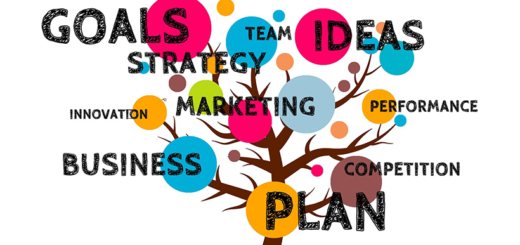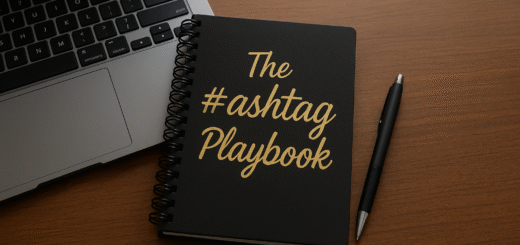Profits Through Partnership
 Leveraging Social Media Collaboration to Double Your Business, Triple Your List and Make a Ton of Sales
Leveraging Social Media Collaboration to Double Your Business, Triple Your List and Make a Ton of Sales
You can build a six or even seven figure business when you learn to collaborate with other social media marketers, using their audiences to grow your business.
Let’s say you have 1,000 followers, subscribers, fans, customers or whatever. Maybe they’re groupies. The point is you have 1,000 people who regularly see your messages, click your links and hopefully buy your products.
You collaborate on social media with 5 other marketers who each have one or two thousand subscribers of their own, and you gain maybe 200 new followers from each campaign.
Now you have a total of 2,000 followers, subscribers, etc.
Next you collaborate with 5 more marketers who each have a few thousand followers, and you gain another 2,000 followers, making 4,000 total.
You keep moving up the food chain (so to speak) collaborating with more marketers who have larger followings to build your list bigger and bigger.
In a year? You have 10,000 or maybe 20,000 followers instead of just 1,000.
And in some cases, if you get really good at this, that number of followers may be much, much higher.
Is this a pipedream? Not at all. Your results will depend on your niche, your ability to build relationships with other marketers and your ability to create offers that followers and subscribers cannot resist.
But social media collaboration is perhaps one of the very best ways to not just quickly increase your list size, but to fill it with people who genuinely want to hear from you.
What is social media collaboration?
Collaborating on social media means working together with people, brands, or groups, to make content and reach more people for the benefit of both parties. It’s like forming a team to show unity and share ideas or make money.
Collaboration can happen in different ways, such as doing projects together, sharing posts, giving away things or hosting events. The main goal is to make interesting content and get more attention for everyone involved, thereby building your list of subscribers, followers and fans.
What are the benefits to social media collaborations?
Social media collaborations offer numerous benefits for individuals, brands, and organizations.
- Increased Reach – They expand reach and visibility by tapping into each other’s audiences.
- Experimentation and Learning – Your new collaborator may introduce you to new content formats and ideas to engage their existing followers and attract new ones.
- Untapped Markets – Partnerships can help you enter into markets and niches you haven’t considered before, offering you access to new audiences and potential revenue streams.
- Increased Credibility – Collaborating with reputable partners enhances your own image and credibility, building audience trust and loyalty.
Furthermore, collaborations establish lasting professional relationships, offer valuable learning experiences, and create opportunities for future projects.
However, there are some potential challenges you need to be aware of when considering social media collaboration.
What are the challenges you’ll face in social media collaboration?
If you jump before you look, don’t think things through or aren’t clear on what each party is going to do, then mistakes can happen and things can go wrong.
Here’s how to play it safe:
Be careful when choosing partners. Before teaming up with a creator or brand, consider their values and image. If your values don’t match, it can cause problems and hurt your reputation. Consider if their audience is your target market, if they’ll want to hear your message and most of all if it’s something they will positively respond to.
Good communication with your partner is also key. Talk openly and often to avoid misunderstandings and solve problems quickly. Before starting a collaboration, discuss your goals and expectations with your partner. This helps you work together towards the same purpose.
Don’t forget about legal matters, too. Sort out rights, money, and content use before you start. This prevents future disagreements.
After the collaboration ends, don’t forget to evaluate how well it went. Set clear goals and track your progress. This helps both parties understand the impact of the collaboration and decide on future partnerships.
What makes a social media collaboration work?
The effectiveness of social media collaborations comes from the creation of shared value among all involved parties, including their respective audiences.
Through collaborations, participants have the opportunity to introduce new perspectives and content to their own audiences as well as getting their content in front of an entirely new audience, thereby expanding their reach.
When brands or influencers with complementary skills or niches come together, it often results in the production of exceptional and captivating content. Additionally, collaborations can lead to heightened brand awareness for both individuals and organizations, fostering deeper customer trust and establishing long-term partnerships.
Think of a collaboration as having 4 parties – you, your own audience, the creator you’re collaborating with and their audience. If the collaboration will be beneficial to all 4 parties, then it can be a smashing success.
What are the types of collaborations?
Really there are only three:
- Creator to creator – for example, you and another content creator
- Creator to brand – you and British Airways
- Brand to brand – British Airways and Rolls Royce
Of course, if you’re just getting started, you might choose to approach a smaller brand than British Airways or Rolls Royce. Working with other small content creators will give you experience in doing collaborations as well as building your contacts and your list.
9 Steps to Social Media Collaboration
Let’s look at the step by step process and see how you might initiate and run your first social media collaboration.
1: Are They a Good Fit?
To find a good collaborator, check if they match your brand and if they’re good at what they do. Also, see if their audience is similar to yours or complements yours. It’s a bonus to find someone with different skills than yours so you can work well together.
Make sure they communicate well and are committed to the partnership, as well as having the credibility necessary to persuade their audience. Don’t forget to do your research before politely reaching out to them.
2: Approach them.
This part is easy. You simply ask them if they have an interest in collaborating with you. For example, if you’re emailing them, you might write something like…
Subject: Collaboration Opportunity?
Hi {name},
Love your work! I especially enjoyed your {name specific content piece and why you liked it}.
I’m {your name} of {website} and would love to collaborate with you on social media. I think my subscribers/followers would love to learn more about your {insert product, ideas, etc.} Are you interested in teaming up for some engaging and fun content together? Let me know!
Best,
{Your name and contact information}
If you have something specific in mind, you can very briefly touch on it in the initial contact (make a video together, do an interview, etc.) but don’t go into any detail yet. Right now you’re simply finding out if they have any interest in working with you.
3: What Will You Do Together?
Choose the type of collaboration you want. This means deciding if you want to work together for a long time or just for one event. You also need to think about what you want to do together, like giving away products or creating content together.
Deciding these things will help make sure you and the other person agree on what to expect. It will also help you know who is responsible for doing what during the collaboration.
Here are a few ideas:
Interviews: Interview each other for your podcasts, on video or in an article and share the interviews on your own platforms.
Joint giveaways: If you don’t have many followers, team up with someone who does and give away something of value to their audience. It’s a good way to connect with people who are interested in the same things. For example, you might offer your course or product to your partner’s followers when they take a certain action, such as promoting your event on social media or joining your list.
Social media takeovers: Sometimes, a popular person takes control of a brand’s social media accounts for a whole day. They post things like pictures or videos on Instagram, TikTok, or Twitter as if they were the brand.
Newsletter features: Talk about each other’s newsletters or trade posts for a day. It’s another good way to reach a bigger or more specific group of people.
Joint course or digital product: If you partner with someone who has a similar audience and expertise, you can work together to create and sell a course or digital product. It can make both of your work look more trustworthy and reliable.
This list isn’t everything, but I hope it gives you some ideas for your next collaboration proposal.
In the beginning it’s best to keep things simple and short. That way if it’s not working out, you can walk away. When you find you work well with someone, propose doing a longer event or possibly even forging a long-term collaboration.
4: Make an Agreement
To avoid headaches later, you might want to create a signed agreement or contract when you start working together. Contracts for social media collaboration might contain:
- A list of what each person needs to do.
- Dates for when each thing needs to be done.
- What each person is responsible for (what they have to do).
- How much money you’ll get and when you’ll get it.
- Who owns the intellectual property and content you make together.
- A contingency plan if the project doesn’t work out.
5: Check in Regularly
Schedule regular meetings with your fellow collaborator to ensure progress is being made, deadlines are being hit, questions are answered and any problems that come up are quickly resolved.
6: Use Tools to Make the Process Easier
Tools make it easier for everyone to work together and keep things organized. You might use Hootsuite for scheduling social media posts, Trello or Monday for managing projects, and Asana for keeping track of tasks.
It’s also important to track how well your social media collaboration is doing. You can use special codes and hashtags to keep track of campaigns or events, and you can share analytics and insights to see what’s working. Tools like Hootsuite Analytics can help you with this.
Lastly, make sure that everyone knows what they’re supposed to do in the collaboration. Tools like Slack or Microsoft Teams can help with communication and make sure that everyone is on the same page.
7: Evoking Emotions
Now it’s time to be creative. Think about how you can use your social media collaboration to make people feel something.
You could donate a portion of the money you make to a charity, bring attention to a cause that both of you care about, or simply create content that will make people smile and connect with it on a deeper level.
If you’re working with an influencer, ask them to create content that reflects their values and connects with their audience. If your collaboration involves creating a product or service, focus on how it can solve a problem for your customers in a special way.
In addition to marketing, social media collaborations can be a way to do something meaningful and strengthen the connections you have with your customers. By combining the right content, creativity, and collaboration tools, you can make this a fantastic opportunity for everyone involved.
8: Choosing the When and Where of What You’ll Post
Timing is crucial for your content. You need to think about when and where you will post, as well as what you will post.
Take into account any holidays, popular topics, or special events that might align with your post. Also, choose a time when you know your followers are most likely to see your content, and adapt this for each platform.
You can use the analytics provided by each platform to understand what kind of content your audience is currently interested in and how they prefer to be engaged. Maybe they enjoy Instagram stories more than regular pictures, or they’re more active on TikTok lately. Your research will help you create a content calendar that resonates with your audience.
It’s also a good idea to ask your collaborator for their input. Remember, you’re not just reaching out to your audience but also theirs. Compare your insights and find a balance that benefits both sides equally.
9: Promote, Promote, Promote
When you work together with others on social media, you can reach more people. But to succeed, you both need to promote the content on your own channels.
To do this, you can make a plan to promote each other’s content. Talk to the person you’re working with and decide who will post what and when. Don’t forget to include links to each other’s social media profiles, websites, and other things you made together.
It’s also a good idea to tell your audiences about your collaboration before it happens. That way, they can get excited about it. Announce the partnership through posts on each account, create your own special hashtag that combines both of your names, and ask followers to sign up for and share in the special promotion.
Choose Wisely
Make careful choices when it comes to your social media partnerships. Collaborating with others on social platforms can greatly benefit your brand, but it also has the potential to harm it.
The key factor in this equation is how your audience perceives these collaborations. What may seem like an excellent idea when brainstorming alone might not be well-received once it reaches the public. Building and preserving trust between creators/brands and their audiences is now more crucial than ever before.
Therefore, it is important to thoroughly evaluate collaboration opportunities and consider their impact on the trust you’ve earned from your audience. If there is even a remote possibility that such a partnership could jeopardize that trust, it’s best to pass on the opportunity.
Remember, there will always be other chances that come your way.














